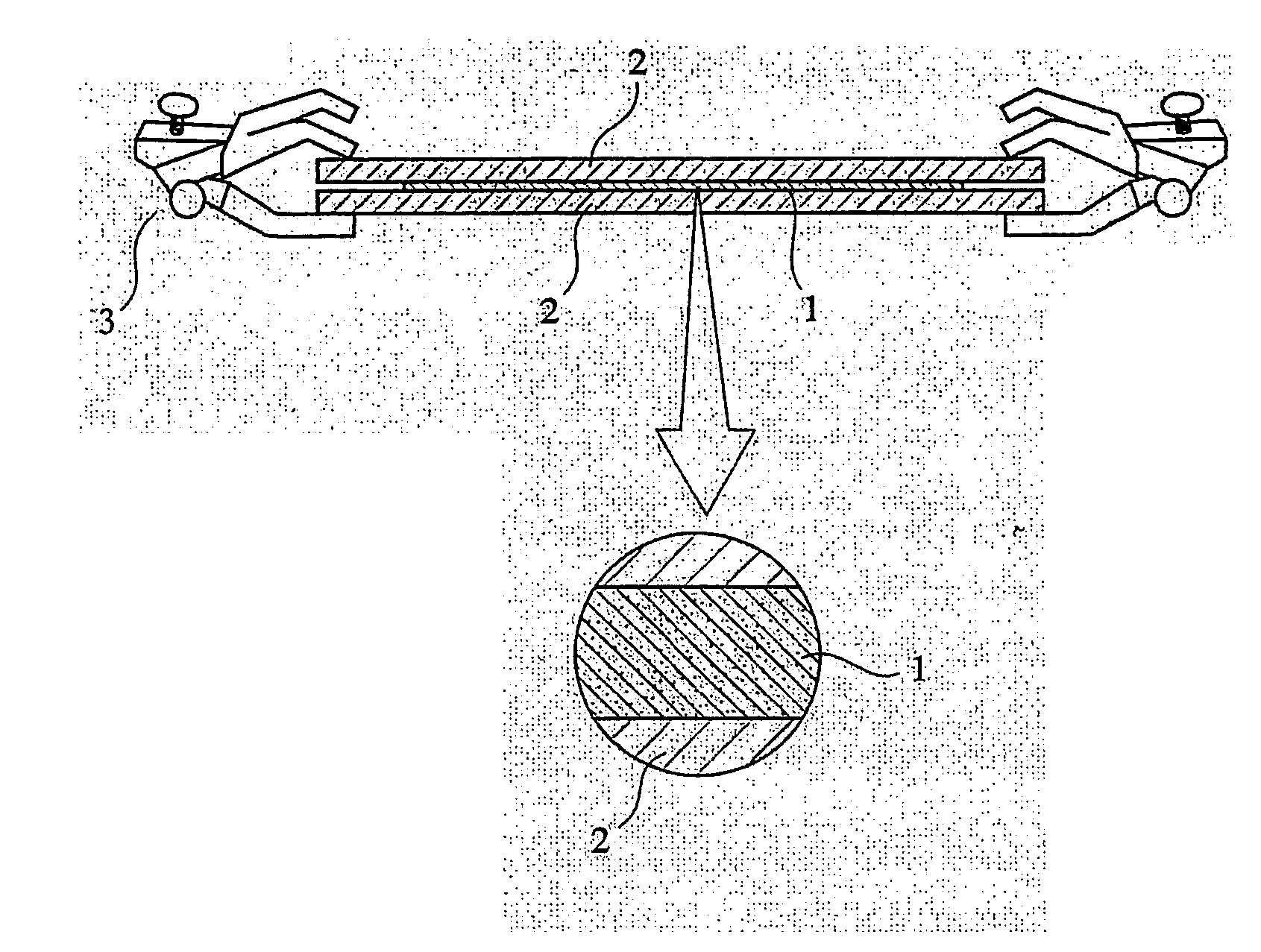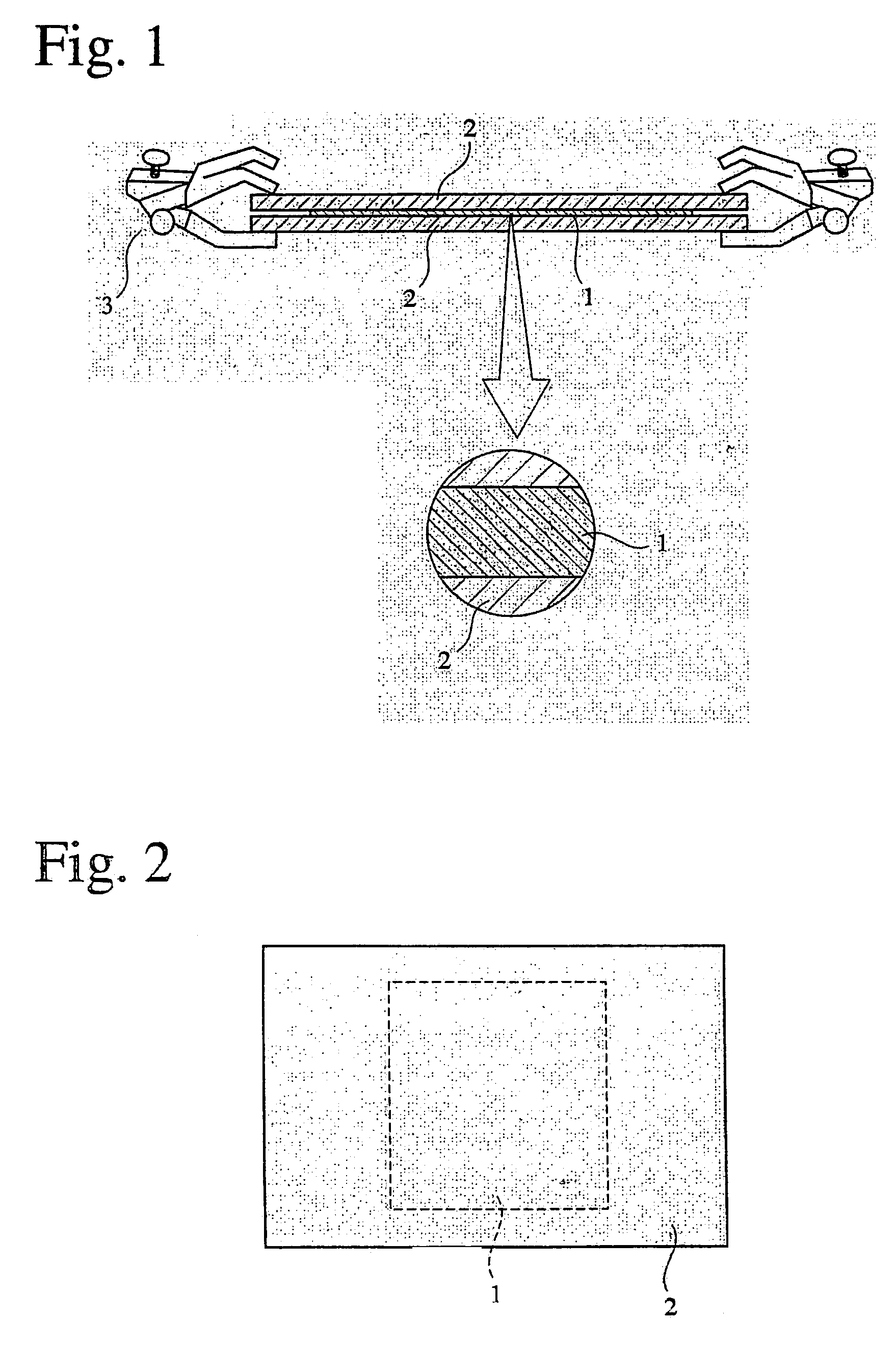Phosphorus-acid-group-containing (meth) acrylamide, its polymer and use thereof, and their production methods
a technology of phosphorus-acid group and acrylamide, which is applied in the field of phosphorus-acid group-containing (meth) acrylamide, can solve the problems of phosphoric-group-containing, unsaturated monomers, and failure to have satisfactory levels of electrolytic group density, and achieve excellent conductivity
- Summary
- Abstract
- Description
- Claims
- Application Information
AI Technical Summary
Benefits of technology
Problems solved by technology
Method used
Image
Examples
example 1
[0191]122.3 g (1.72 mole) of acrylamide, and 1.0 g of hydroquinone monomethyl ether were charged into an automatic synthesis reactor having an inner volume of 500 mL available from UNI-CHEMICAL CO. LTD., to which a reflux condenser, a powder inlet and a thermometer were connected, dissolved in 120.6 g of DMF, and heated to 60° C. After confirming that the inside-reactor temperature reached 60° C., 134.0 g (0.94 mole) of phosphoric anhydride was added with five installments over 3 hours 30 minutes. During adding phosphoric anhydride, the inside-reactor temperature was kept within 60-95° C. while stirring at 300-400 rpm. After all phosphoric anhydride was added, an aging reaction was conducted at 80° C. for 2 hours.
[0192]A reaction solution containing the resultant intermediate product had a solid concentration of 63% by mass, when measured by taking 0.5 g of the reaction solution, diluting it with 5 g of methanol, and drying it with hot air at 100° C. for 1 hour. The same concentrati...
example 2
[0200]142 g (2.0 mole) of acrylamide, and 1.0 g of hydroquinone monomethyl ether were charged into the same automatic synthesis reactor as in Example 1, dissolved in 198 g (2.0 mole) of N,N-dimethyl acrylamide (DMAA), and heated to 70° C. After confirming that the inside-reactor temperature reached 70° C., 156 g (1.1 mole) of phosphoric anhydride was introduced with five installments over 3 hours through a powder inlet. During adding phosphoric anhydride, the inside-reactor temperature was kept within 70-95° C. while stirring at 300-400 rpm. After all phosphoric anhydride was added, an aging reaction was conducted at 80° C. for 2 hours.
[0201]The resultant solution was mixed with 19.8 g (1.1 mole) of water, and heated at a temperature of 70-95° C. for 30 minutes while stirring to cause hydrolysis. The refractive index of the resultant reaction solution was measured at a temperature of 20° C., using a hand-held Refractometer 500 available from Atago Co., Ltd. The same refractive-index...
example 3
[0202]As shown in Table 3, a reaction solution (solid concentration: 53% by mass) containing an intermediate product was prepared in the same manner as in Example 1, except for using 71 g (1 mole) of acrylamide and 156 g (1.1 mole) of phosphoric anhydride as starting materials and 198 g of DMAc as a solvent. The acid value of the intermediate product was measured on 1 g of the reaction solution. It is presumed that the intermediate product (acid value: 550 mg / g) is either a compound (theoretical acid value: 525.8 mg / g) having pyrophosphoric acid N,N-linked to acrylamide or a compound (theoretical acid value: 525.8 mg / g) having two acrylamide molecules bonded via dipyrophosphoric acid [see the above formula (8)]. When part of the reaction solution was mixed with water, it became cloudy, presumably because water-insoluble acrylonitrile was by-produced.
[0203]The reaction solution containing an intermediate product was mixed with 20 g (1.1 mole) of water, and heated at 70-80° C. for 30 ...
PUM
| Property | Measurement | Unit |
|---|---|---|
| temperature | aaaaa | aaaaa |
| molar ratio | aaaaa | aaaaa |
| molar ratio | aaaaa | aaaaa |
Abstract
Description
Claims
Application Information
 Login to View More
Login to View More - R&D
- Intellectual Property
- Life Sciences
- Materials
- Tech Scout
- Unparalleled Data Quality
- Higher Quality Content
- 60% Fewer Hallucinations
Browse by: Latest US Patents, China's latest patents, Technical Efficacy Thesaurus, Application Domain, Technology Topic, Popular Technical Reports.
© 2025 PatSnap. All rights reserved.Legal|Privacy policy|Modern Slavery Act Transparency Statement|Sitemap|About US| Contact US: help@patsnap.com



